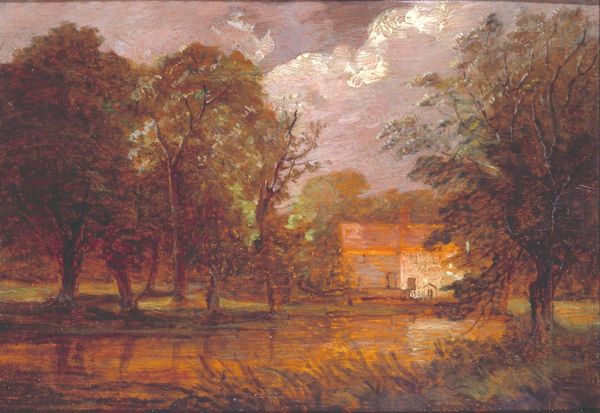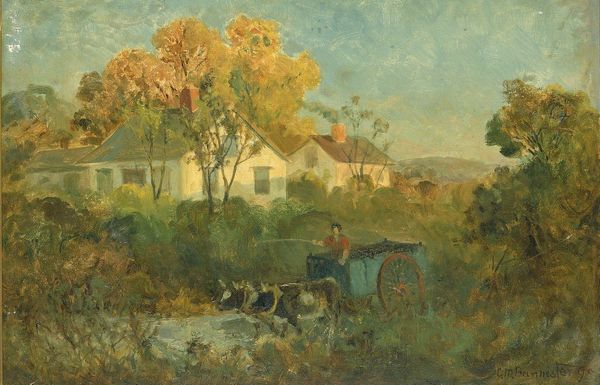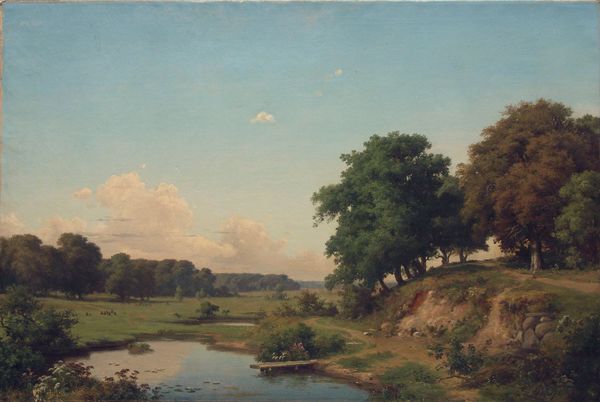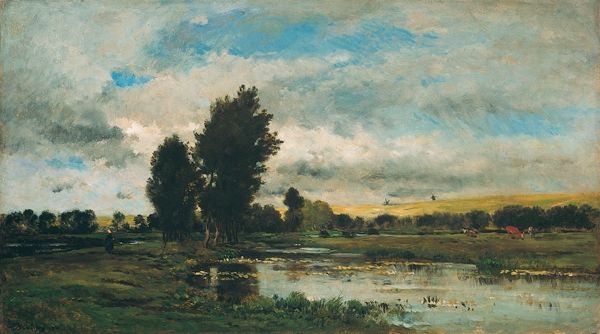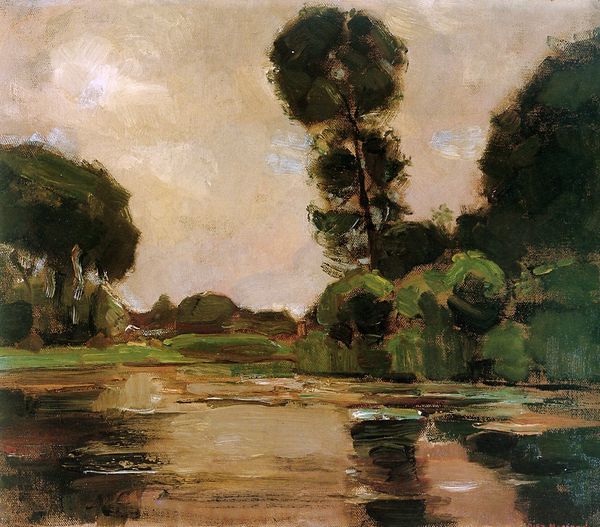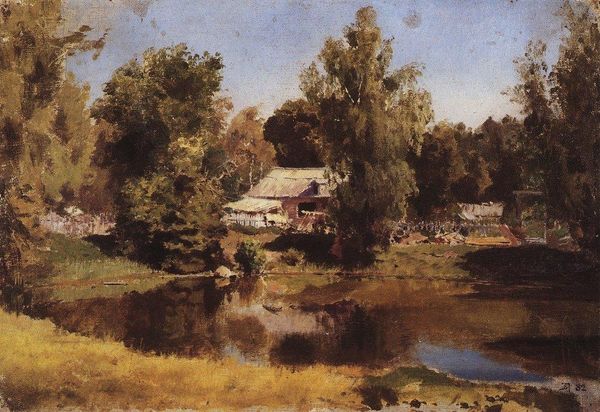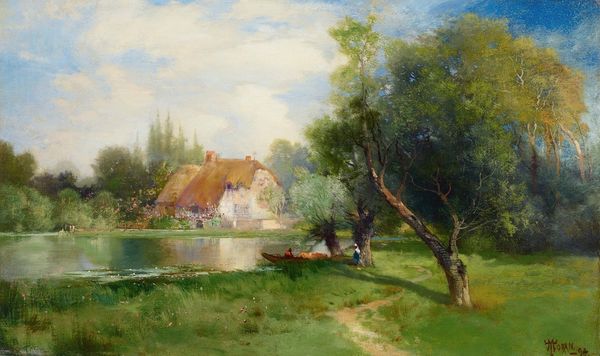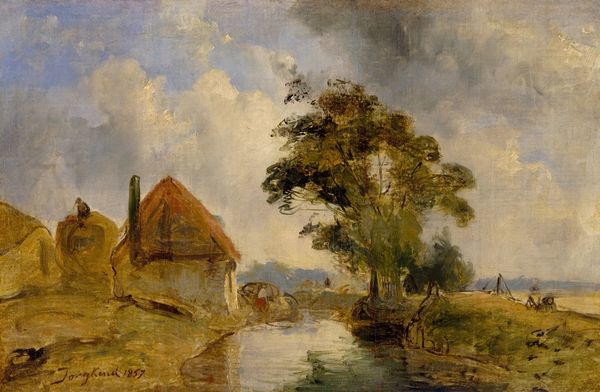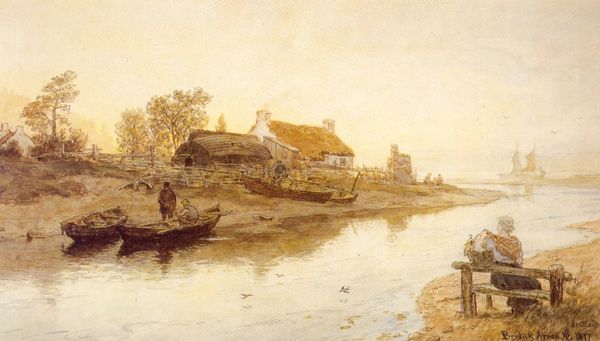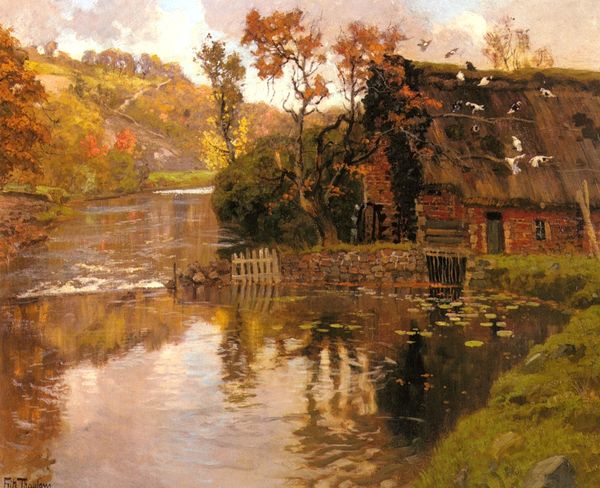
#
possibly oil pastel
#
oil painting
#
acrylic on canvas
#
street graffiti
#
underpainting
#
painting painterly
#
watercolour bleed
#
mixed medium
#
mixed media
#
watercolor
Copyright: Maxfield Parrish,Fair Use
Curator: This piece, called "Daniels Farm, Summer," comes to us from Maxfield Parrish. There’s no confirmed date attached to it. I wonder, what strikes you first about it? Editor: Well, right away, I notice the stillness. It feels so quiet, almost hushed. The clouds are these huge, pillowy forms, and they’re catching the light in such a way that everything has this soft, golden glow. What do you make of that light? Curator: I think the golden light makes everything feel otherworldly, and Parrish’s composition focuses on the farm and clouds in equal measure. There's such balance in the placement. This is a scene of utopian pastoral bliss, no? Editor: It does seem to idealize rural life, certainly. Though I wonder, does that idealization come at the expense of acknowledging the labor involved? Farm life isn’t typically so…serene. Looking at this through a contemporary lens, it begs the question: whose labor is being erased in this picture of idyllic calm? The lack of human figures on a farm, surely one run by many farmhands, appears highly suspect in the modern day. Curator: That is a great observation. You bring up such an interesting point about whose story isn't being told. I was really just captured by its technical skill. To use light to create mood; and Parrish has mastered the golden, romantic effect here. Editor: It is undeniable how captivating this is; perhaps Parrish offers us the tools to then build our own historical and social narrative onto his imagery? And yes, this also strikes me as a work where Parrish invites the viewer into their own memories and subjective interpretation of such beauty, which surely extends from our personal, social and cultural baggage and contexts. Curator: Precisely! The farm seems almost to wait, a vessel ready to fill. What else stands out as you consider these layers? Editor: Well, it reminds me of the complex relationship between art, memory, and power. Even something as seemingly simple as a landscape painting can open up discussions about representation and exclusion. Curator: You've given me much to think about. And, if this sparks more questions than answers, I’d argue it did exactly what art should do. Editor: I concur entirely; hopefully listeners feel energized and equipped with some analytical tools for their journeys of artistic interpretation!
Comments
No comments
Be the first to comment and join the conversation on the ultimate creative platform.
